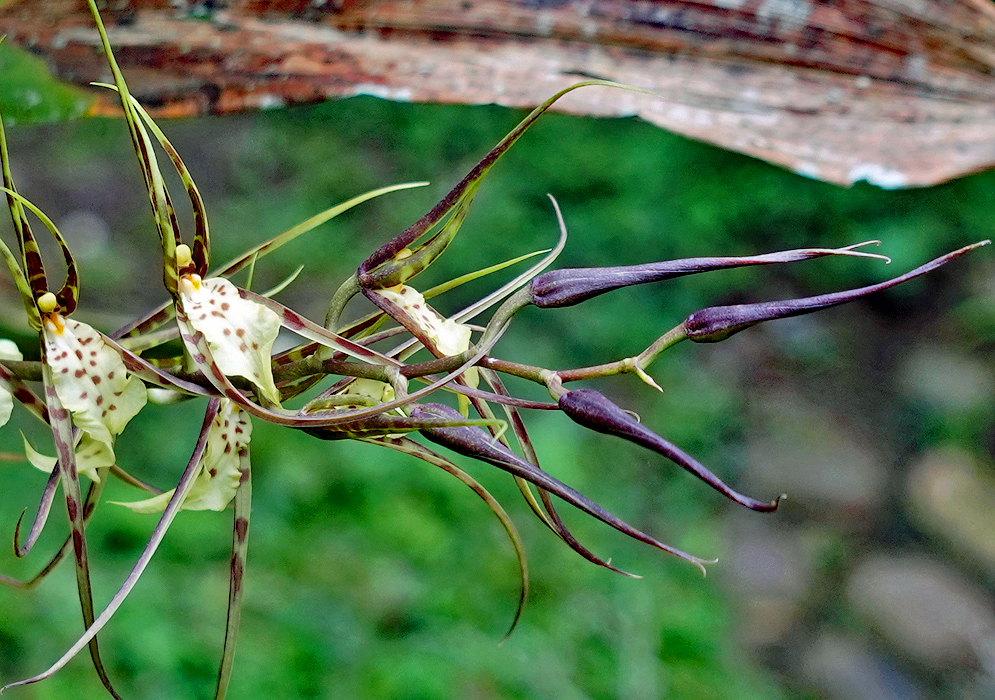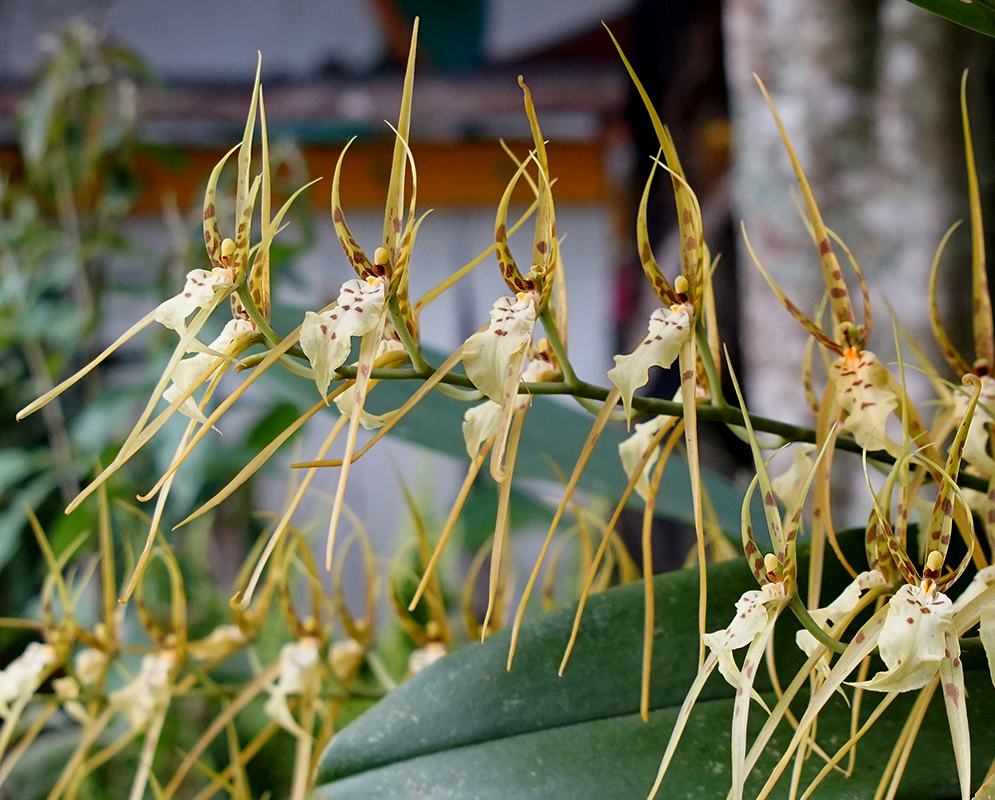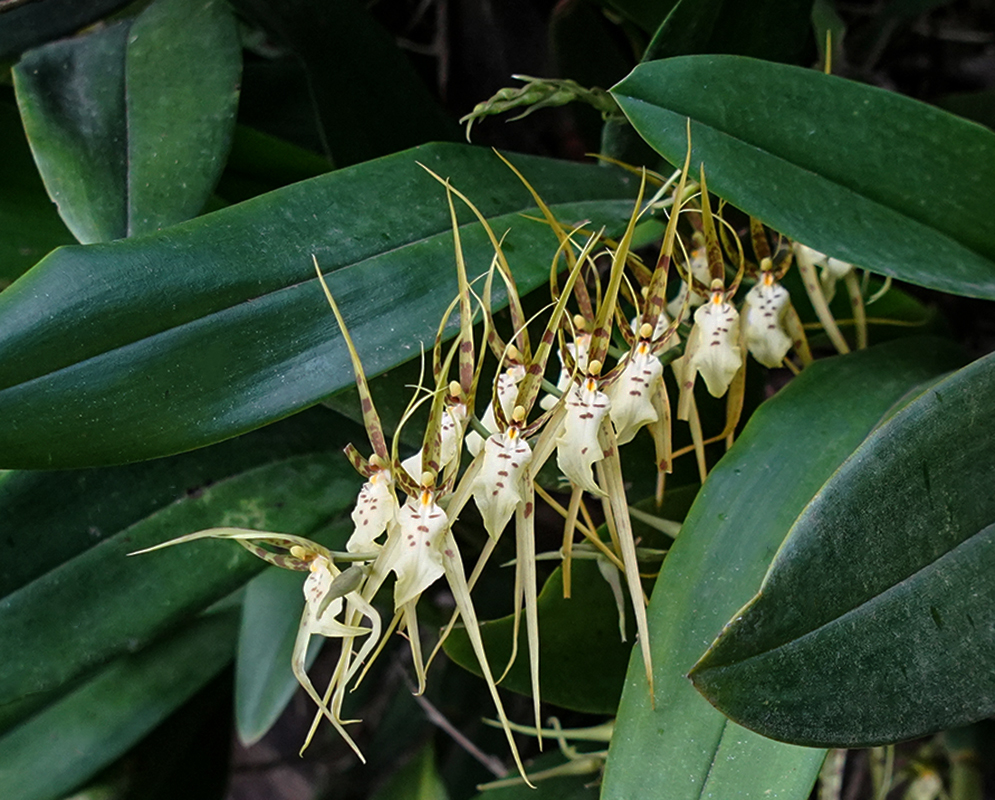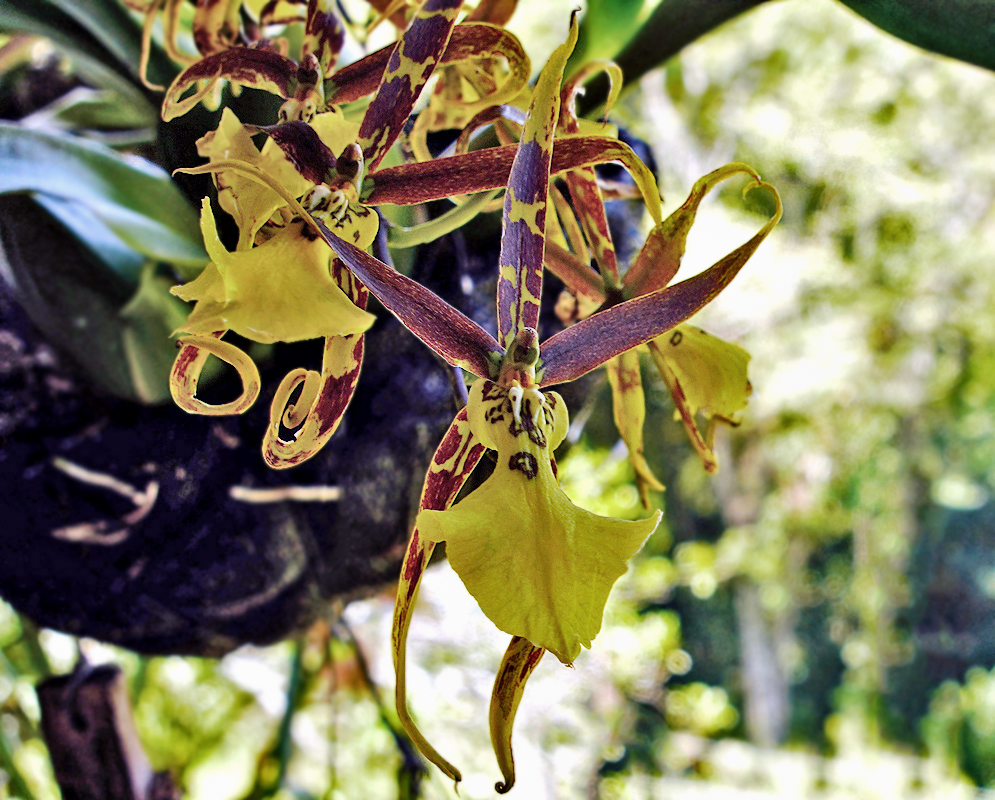This post has 11 Simple Fields-fields attached. Show fields.

Brassia caudata, has a distribution stretching across the warmer regions of the Western Hemisphere. The Spider Orchid adapts to a variety of ecosystems including swamps and woodlands. As an epiphyte, it grows on other plants, obtaining moisture and nutrients from the air and rain. It's recognized by its strongly flattened pseudobulbs bearing two glossy, relatively long, green leaves. The inflorescence, arising from the axil of the pseudobulb, showcases large spindly flowers characterized by long slender yellow-green sepals and petals, which are barred and blotched with brown. This peculiar appearance aids in its pollination strategy, where the speckled petals and sepals mimic the legs of a spider, deceiving spider-hunter wasps into pollinating the flowers. When a wasp attempts to prey on what it perceives to be a spider, it comes into contact with the flower's pollinarium which then adheres to the wasp's head, ensuring the transfer of pollen to the next flower visited by the wasp. Photographed in Quindio, Colombia.









